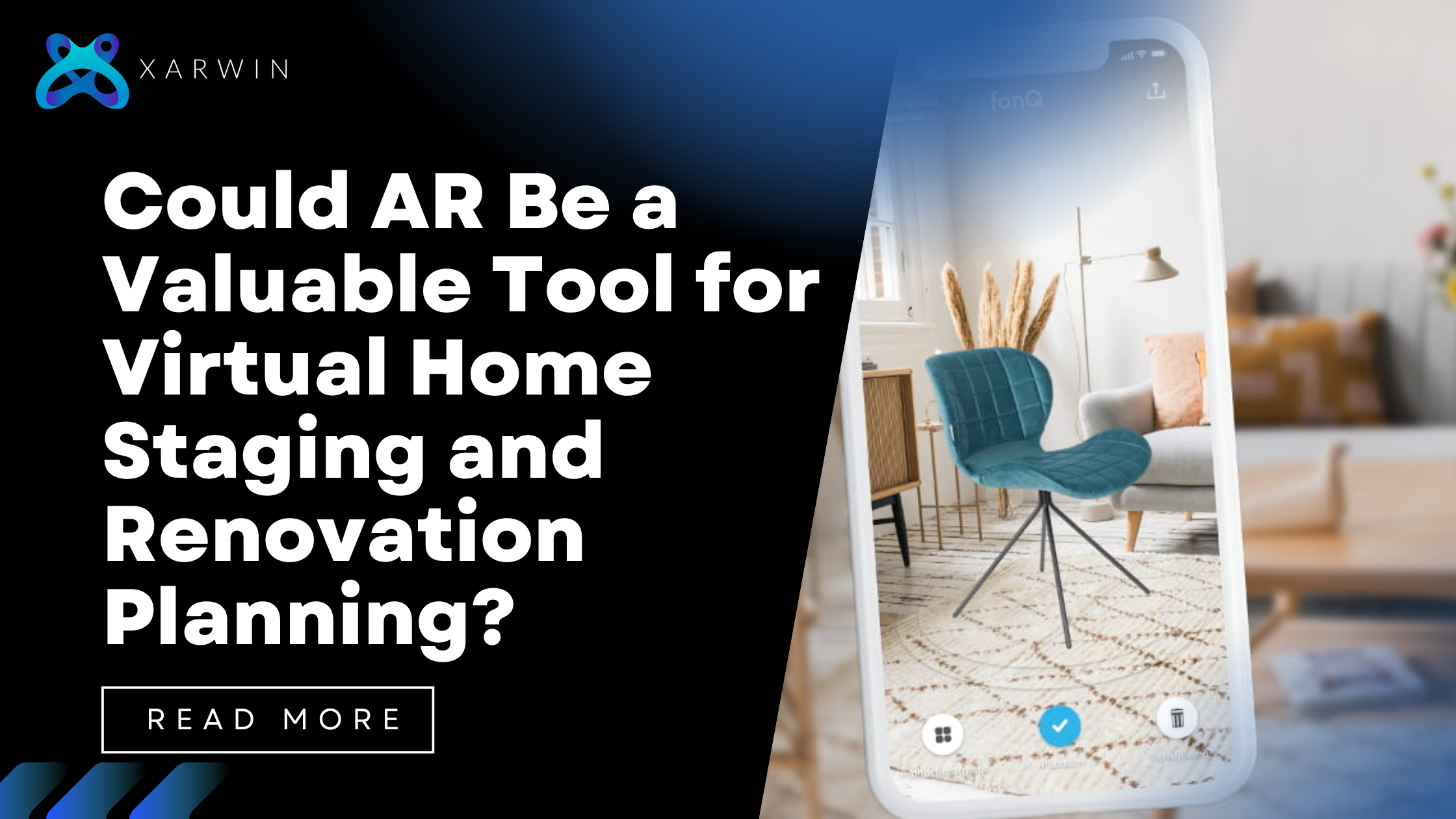AR is a technology that merges the virtual and real worlds, creating a transformative effect on how people interact with properties. For real estate agents, it’s akin to having a magic wand that transforms the property viewing experience. In this blog, we will be taking you on a journey to explore the various ways that AR is revolutionizing the property game.
The impact of AR is not insignificant. It is transforming the entire buyer experience from mundane to magnificent. With AR, buyers can engage with properties in a whole new way, turning property viewing into an exciting adventure. We are about to venture on a journey that takes the ordinary house run-through to new heights with the help of AR.
Stay tuned and join us on this journey to discover how AR is changing the real estate game.
The Evolution of Visualization:
Real estate professionals acknowledge the dilemma of showing buyers what a property could look like. In this way, AR is truly revolutionary. By superimposing virtual elements onto the real world, it provides an immersive experience like no other before it. Here’s an example: imagine being fixed in an empty living room, buyers can now satiate their curiosity simply by using their smartphones or AR-equipped devices to see the space equipped with all manner of furniture styles and colour modes.
This level of visualization allows buyers to emotionally relate to a property like never before. For instance, a potential buyer can test-drive sparse modern or traditional styles via digital walkthroughs. The result is customized to their tastes on the fly.
Virtual Property Tours Reimagined:
Thanks to AR’s introduction of virtual property tours, the days when thorough physical property inspections are necessary are becoming a thing of the past. Now, real estate agents can create interactive, guided tours that permit prospective clients to roam around homes while sitting at home. AR applications allow buyers to freely roam through properties as they wish, seeing the things that interest them most and getting a real sense of space. Not only does this save time, but it also provides wider opportunities for both the audience and those who may be unable to attend physical showings of properties.
Imagine, for example, a family interested in buying a property can virtually stroll around the garden, seeing what it may be like to have get-togethers or watch children playing there. All of this can be done without even stepping foot on the site to look around.
Interactive Property Information:
Augmented Reality (AR) is not just about making things look better. It provides a forum for sharing property information interactively and in an easy-to-access manner. Real estate agents can add information like price, square footage, and facilities directly to the AR experience.
With the use of their AR devices, as buyers walk through a property, they can find relevant information instantly and attain a better understanding of its features. Its dynamic integration of data means that potential buyers are constantly well-informed and involved throughout the process.
For example, an AR-wielding buyer perusing a modern kitchen might learn about the energy efficiency or usefulness of high-end appliances and get some idea about recent renovations. All of this helps in building up as much detailed information on the value as possible – especially given that more companies have recently come online with platforms offering to sell residential homes so quickly.
Augmented Reality as a Confidence Builder:
Purchasing a home is one of the biggest financial decisions, and uncertainty can be an obstacle to potential buyers. This is the problem that AR works to solve by offering a more transparent and informative experience. The ability to deliver accurate, real-time information and visuals helps agents build a confident relationship with buyers in their decision-making.
This transparency doesn’t just benefit buyers; it also creates a base of trust between agents and their customers. For instance, an investor worried that the neighbourhood is unsafe can use AR to retrieve real-time crime statistics and community data. This makes him feel confident he’s made the right choice in choosing a particular property.
The Comprehensive Experience:
AR offers a full range of experiences by selectively integrating historical data, neighbourhood statistics, and future development plans into its services. This wealth of information allows buyers to make informed choices, not only regarding the property itself but also as part of the overall real estate landscape. This comprehensive approach defines AR as not just a medium for property trading but also as an integral part of the fabric of real estate.
For example, a buyer assessing the potential of an old property using AR may explore historical records on its value fluctuations and thus determine whether it has much room for rising prices in the future. Furthermore, AR provides an outlook on nearby infrastructural developments, such as schools or transportation hubs that are about to be built, all of which can affect the long-term attractiveness of a location.
Conclusion:
Augmented Reality (AR) is leading the way in introducing innovative and creative solutions to transform the real estate industry. By using AR, people can see virtual tours of properties and get interactive information about them. This makes the home-buying process smoother and more efficient and helps real estate agents stay competitive. AR is the future of real estate where people can experience both digital and physical worlds together.
As a trailblazer in augmented reality (AR), Xarwin combines innovation with a user-centric approach to redefine industry standards. Its team of expert engineers, designers, and strategists excels in crafting immersive AR experiences across various sectors. With each project, the company not only meets current demands but also shapes future trends, establishing itself as a leading force in the AR landscape.





